Building Down the Hill
Steep sites create design challenges that flat lots don't. When you're working on a slope, every decision about foundation, access, and how the building steps with the terrain affects both construction cost and how people experience the architecture. This townhome development shows one approach to making slope work in your favor rather than fighting it.
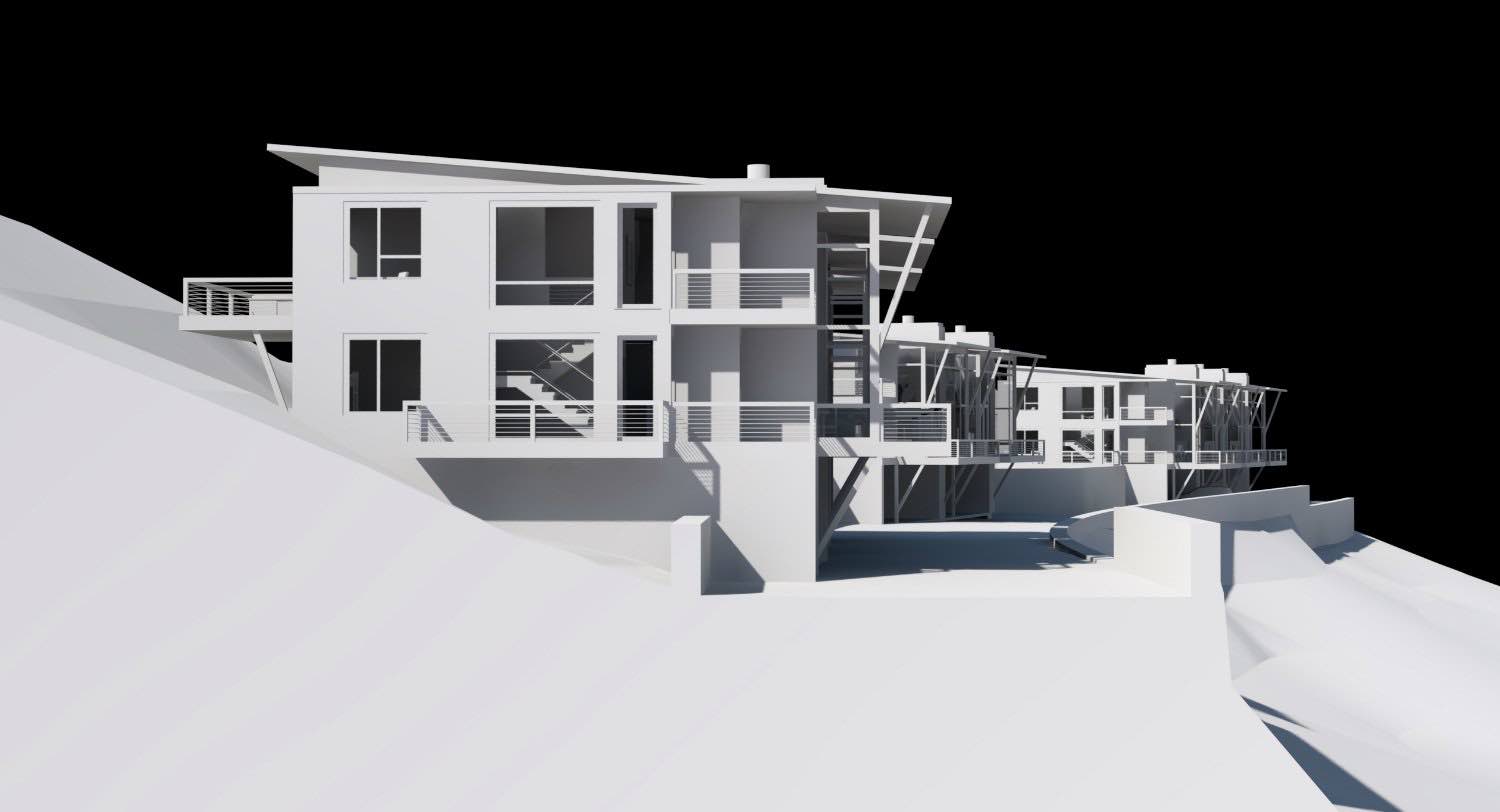
We designed these units to step down the hillside in three-story sections. Each townhome gets its own footprint that keys into the slope at a different elevation. This means you're not cutting massive amounts of earth or building tall retaining walls. The building follows the existing grade, which reduces site work and foundation costs while creating natural separation between units.
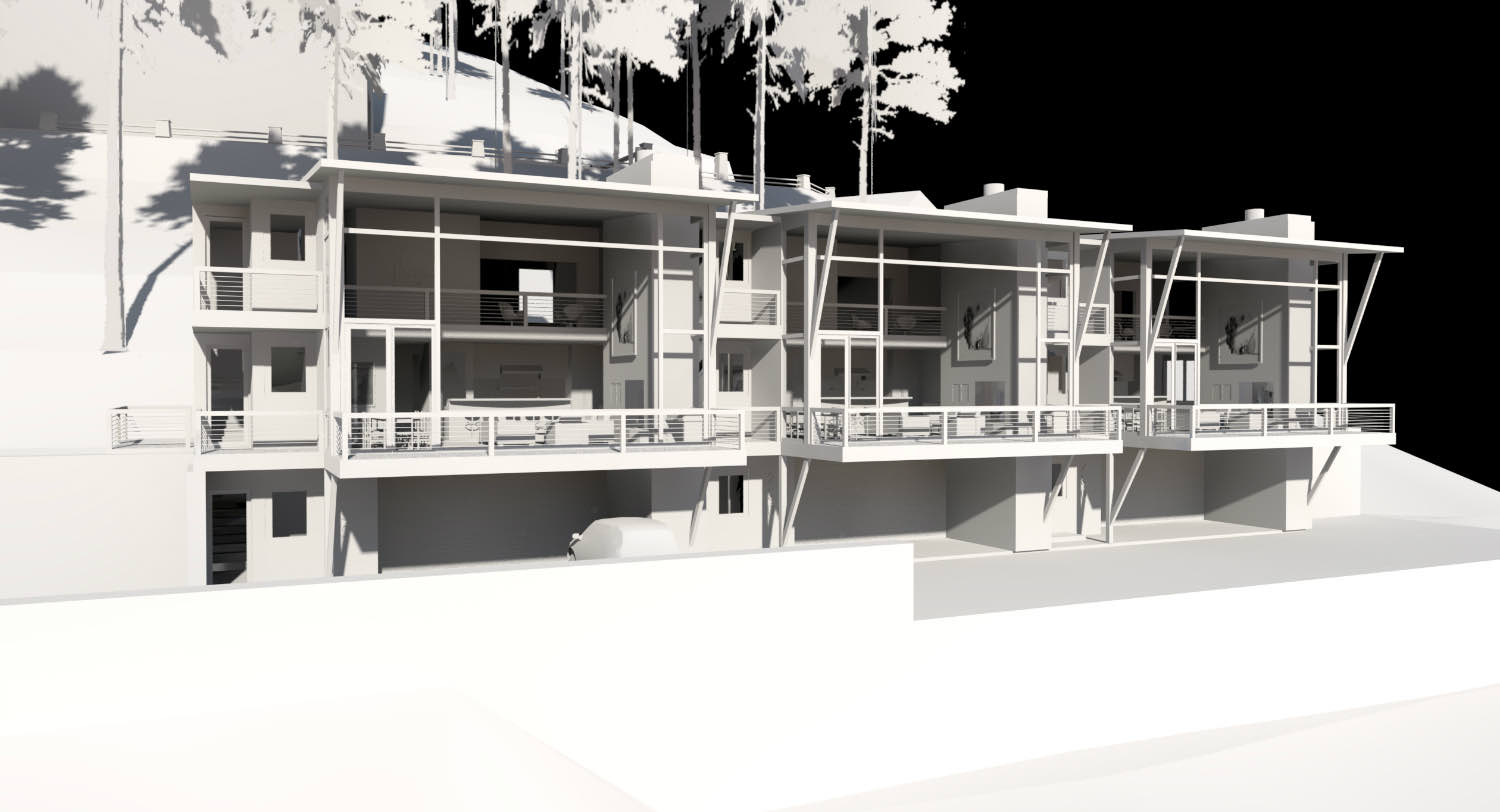
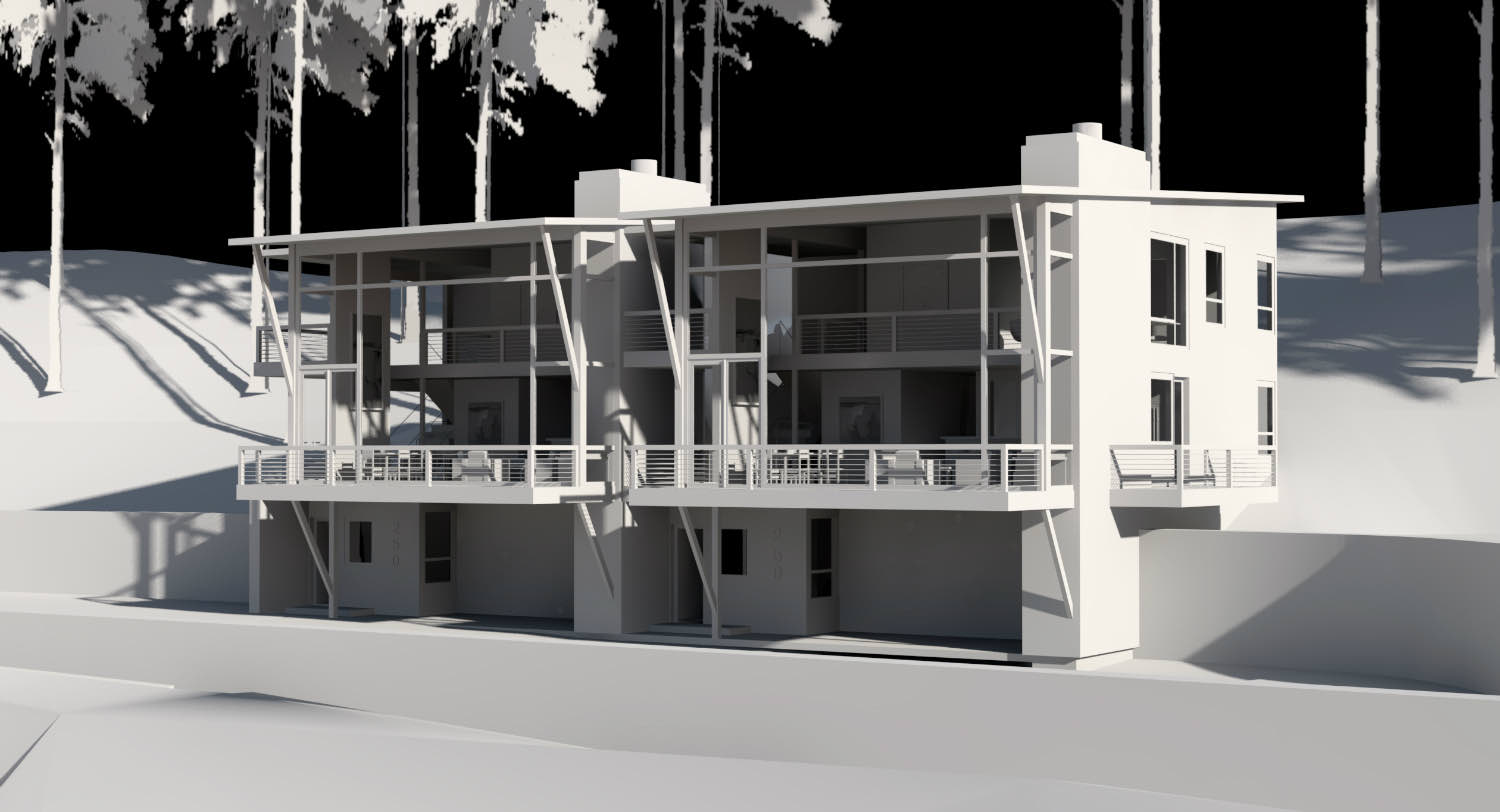
The structural system uses exposed angled supports that carry loads down to stepped foundations. These aren't decorative. On a slope like this, you need to transfer vertical loads while also managing lateral forces from the hillside. The bracing does both, and leaving it exposed keeps the construction honest and reduces the building envelope you need to weatherproof.
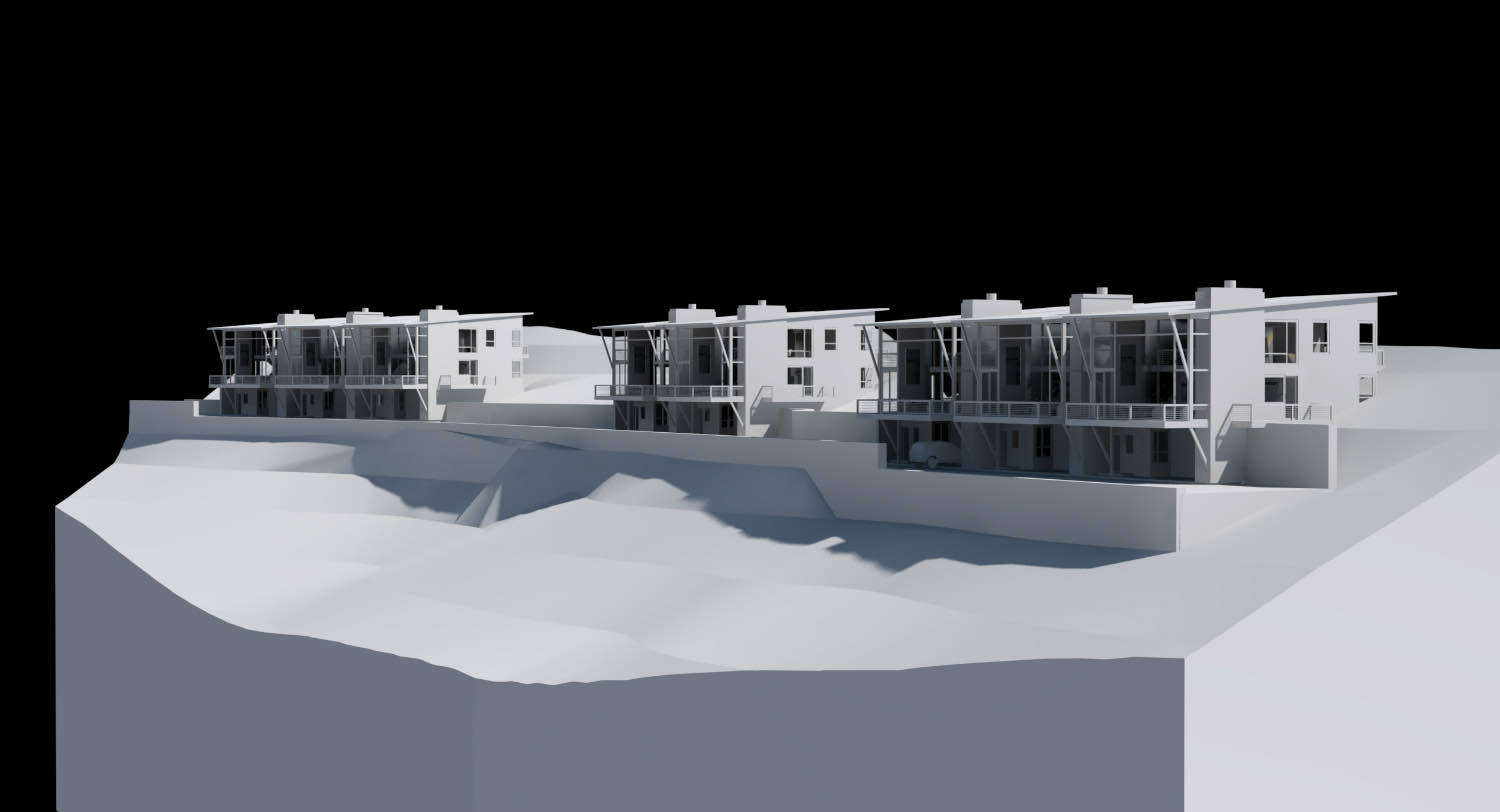
Each unit has multiple levels of outdoor deck space. When you build on a slope, every floor can potentially open to grade or to a deck at that elevation. The lower level might be at grade on the downhill side, the main level gets a deck that's effectively at the second-story height, and upper floors step back for more exterior space. You end up with more usable outdoor area than you'd get on a flat site.
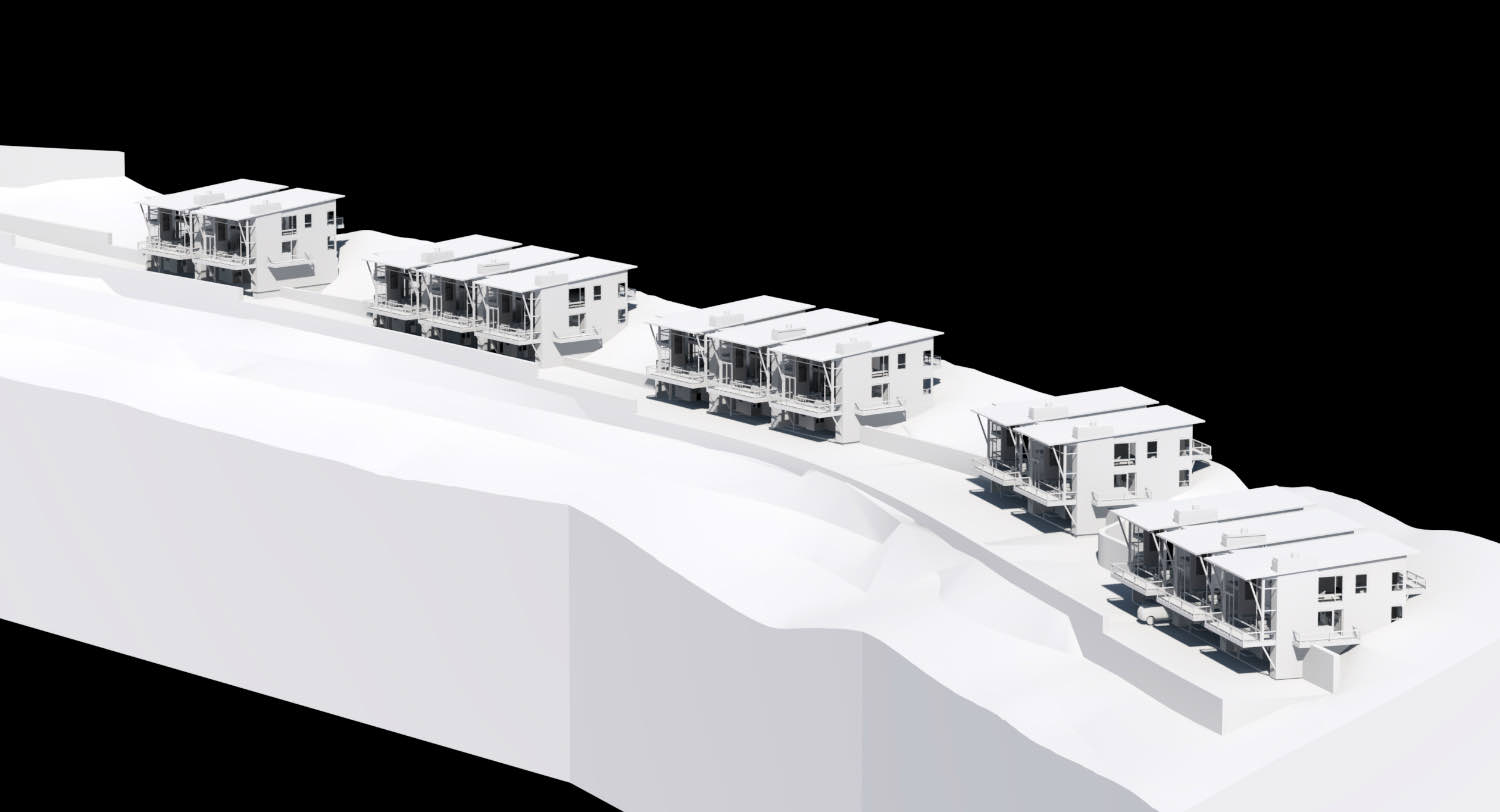
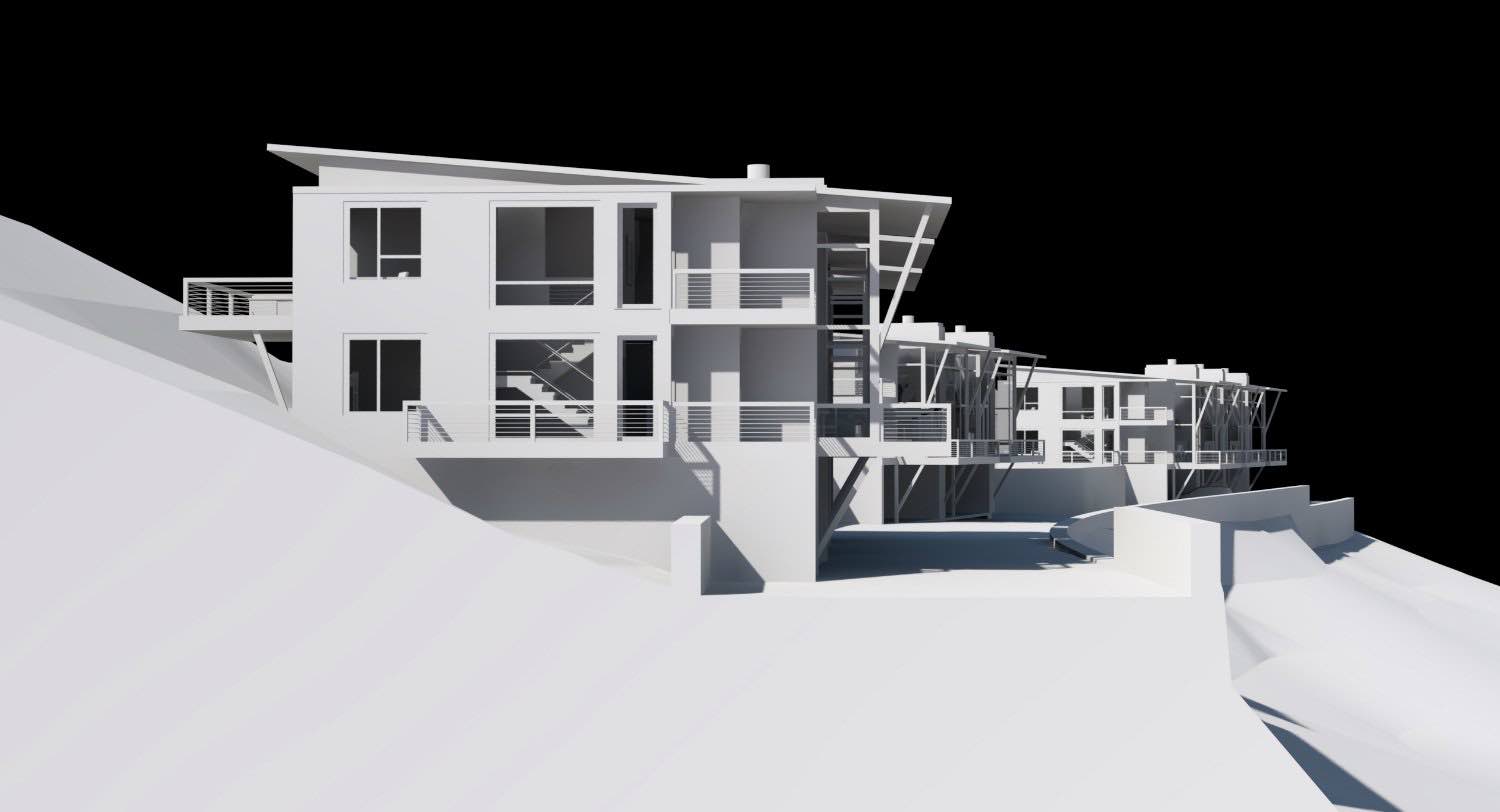
The glazing is extensive because slope sites often come with views. Large windows and sliding doors open living spaces to the decks and whatever the site overlooks. Horizontal railings keep the visual barriers low while meeting code. The transparency works because each unit is offset from its neighbors, so you're not looking directly into someone else's space.
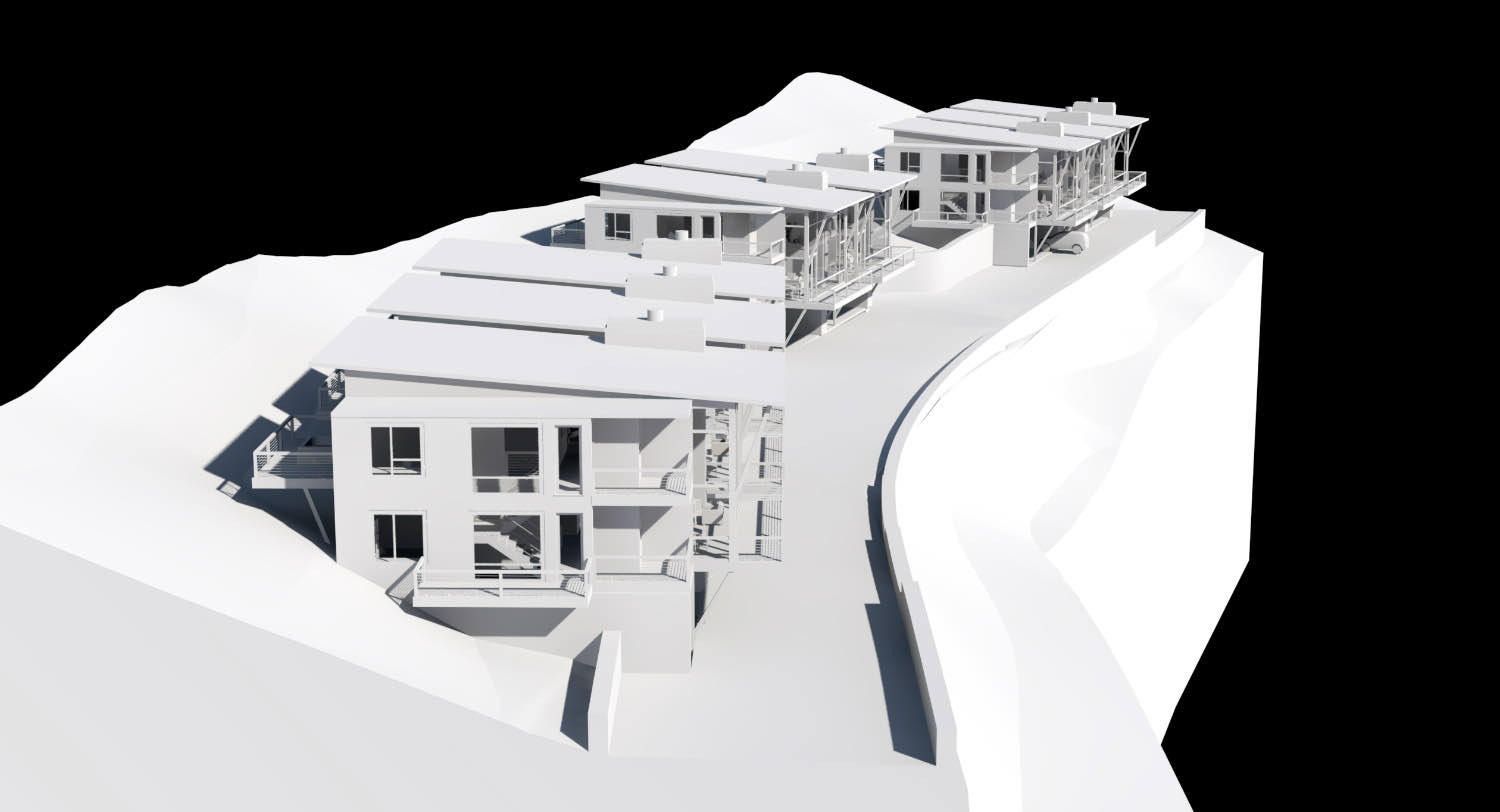
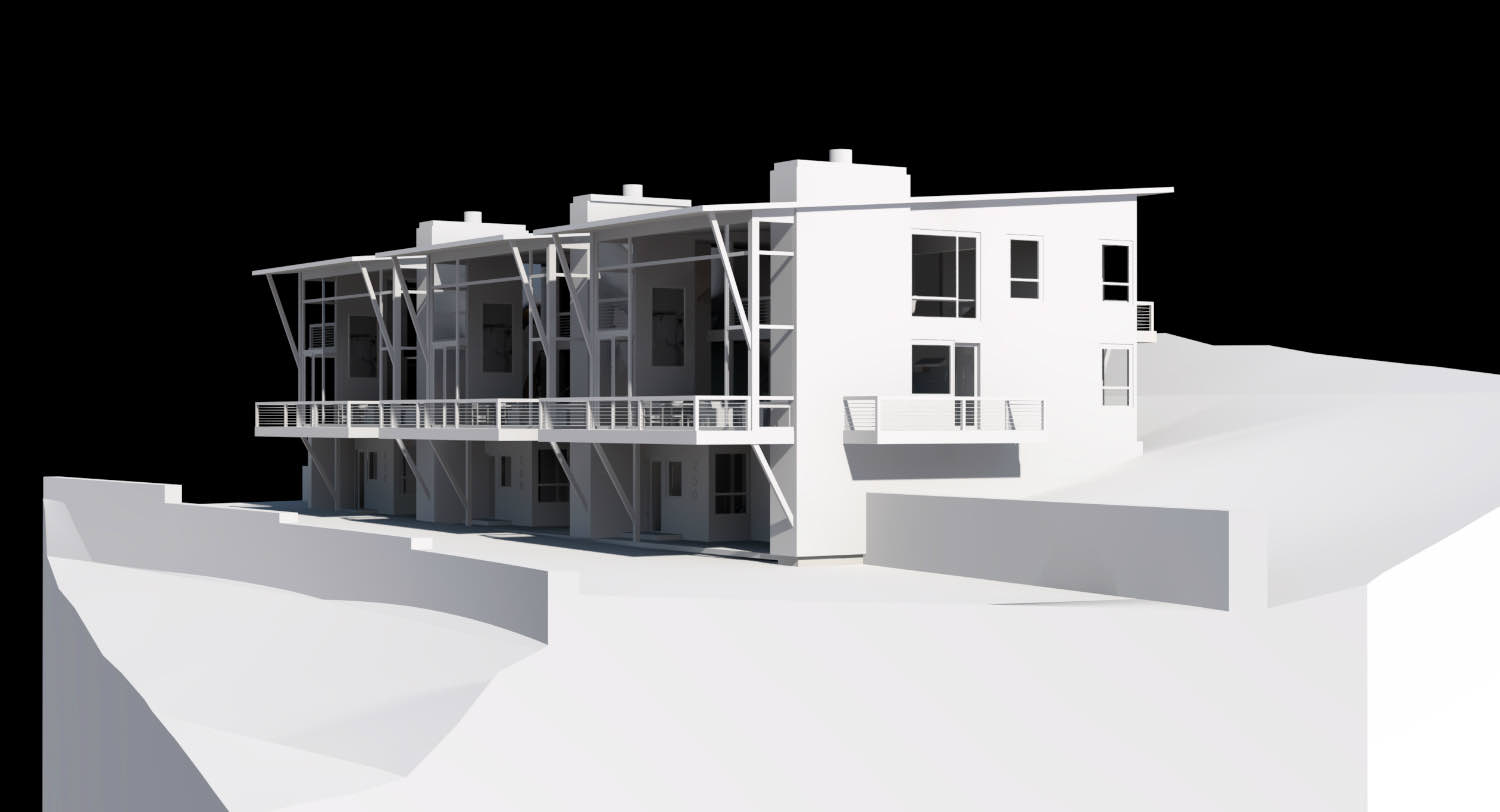
Building on steep terrain takes more structural thinking than flat sites, but the results can justify the effort. You get natural separation, multiple connections to the outdoors, and often better views than you'd find on level ground. If you're looking at a sloped property and trying to figure out whether the site works for multi-unit development, we can help you assess what's possible.
